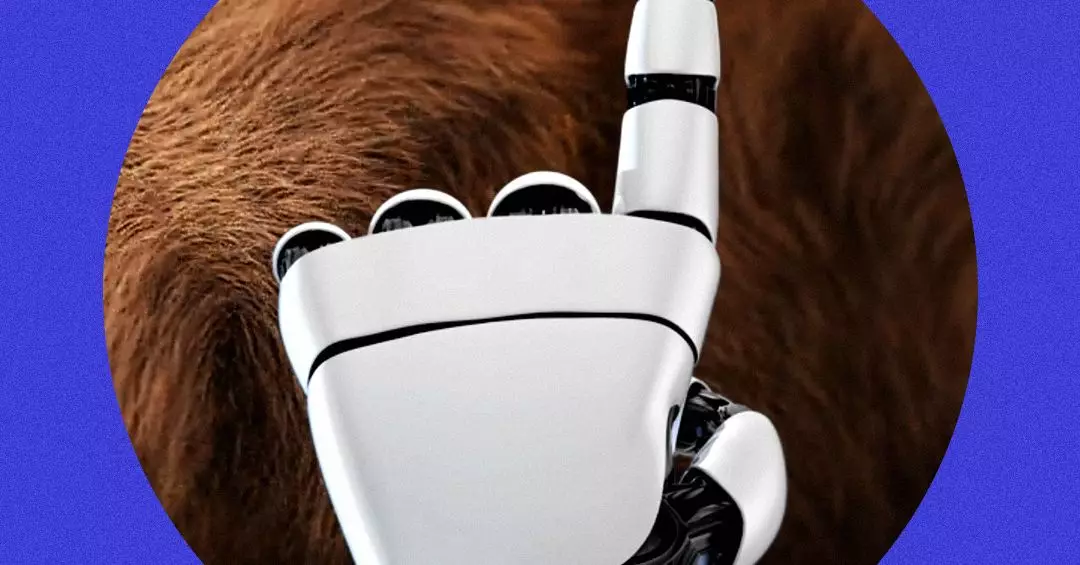In the realm of automation, Amazon has taken a significant leap forward with the introduction of its advanced warehouse robot, Vulcan. This innovative machine is not just another addition to the robotic workforce; it represents a focused endeavor to enhance the sensory capabilities of robots, particularly their tactile dexterity. As explored by Aaron Parness, Amazon’s director of robotics AI, the ability to sense touch allows Vulcan to effectively navigate the messy and often chaotic environments of warehouse shelving. This is crucial for operations where precision and efficiency are demanded.
Parness describes Vulcan’s functionality, highlighting its unique features like a custom spatula-like appendage designed for maneuvering through tightly packed inventory. With articulated joints equipped with sensors, Vulcan can feel the edges and contours of the items around it, doing away with the risks of clumsy handling typical of its robotic predecessors. This tactile feedback not only facilitates better interaction with objects but also ensures that fragile and sensitive items are handled with care, minimizing the risk of damage during storage and retrieval processes.
Machine Learning: The Core of Robotic Intelligence
The integration of machine learning plays a pivotal role in Vulcan’s development. The robot analyzes sensor signals to form a comprehensive understanding of its environment and dictate its actions efficiently. Parness emphasizes that the sophistication of the software behind Vulcan is critical. The algorithmic loop, which incorporates force and torque measurements into motion plans, is what elevates Vulcan beyond mere mechanical functionality. This nuanced data processing allows Vulcan to perform tasks with an efficiency level previously deemed impractical for robots.
The machine’s learning capabilities enable it to adapt to various scenarios encountered within the fulfillment center, which is essential for enhancing productivity. As robots like Vulcan learn from their environments, they can execute tasks that were once solely reliant on human labor, relieving workers from mundane and physically demanding jobs.
Vulcan in Action: A New Era of Collaboration
Demonstrating its capabilities, Vulcan is already operational in Amazon’s fulfillment centers in Hamburg, Germany, and Spokane, Washington. The robot operates alongside human pickers, performing the strenuous task of navigating high and low shelves to retrieve products. By sharing the workload, Vulcan frees human workers from taxing conditions, thereby promoting employee welfare. According to Parness, Vulcan is engineered to take on the more strenuous activities of order fulfillment while still relying on humans for tasks that require a nuanced touch or complex problem-solving.
This collaborative approach is not just a matter of efficiency; it heralds a future where humans and robots coexist in the workforce, each complementing the other’s strengths. Ken Goldberg, a roboticist from the University of California, Berkeley, underlines the importance of this collaboration, noting that the capabilities of robotic systems need to advance considerably before they can mimic the full range of human tactile abilities.
The Future of Robotics and Human Labor
Despite the impressive capabilities of Vulcan, there remains a strong recognition that robots cannot fully replicate human tactile sensitivity. Goldberg points out that the complexity and responsiveness of the human sense of touch are still unmatched, suggesting that it may be some time before robots can achieve similar performances. However, Vulcan serves as a significant step towards that goal, pushing the boundaries of what robots can accomplish in fulfillment centers.
Amazon’s shift towards automation reflects a broader trend across industries, where companies are increasingly investing in intelligent technologies to enhance operational efficiency. Nonetheless, Parness is cautious, suggesting that Amazon does not envision a future without human workers entirely. This acknowledgment of human labor’s irreplaceable value underscores an important perspective: while technology will undoubtedly revolutionize the workforce, it will not render human expertise obsolete, but rather reshape it.
As Vulcan continues to evolve and demonstrate its capabilities, it will undoubtedly pave the way for further advancements in robotic technology, promising a future of enhanced productivity and improved working conditions. The journey towards greater automation in fulfillment centers promises to be as complex and multifaceted as the technology itself, raising questions about the evolving relationship between humans and machines in the workplace.

